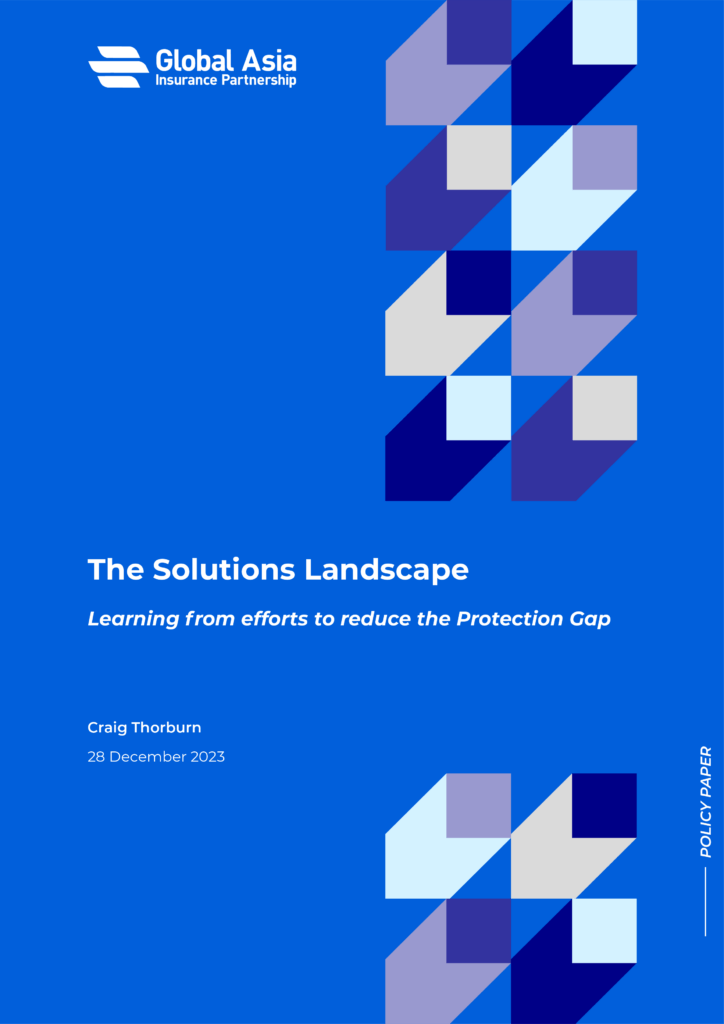
From Dialogue to Roadmap – Translating Conversations at the GAIP Summit 2024
By Min Hung Cheng 10 July 2025 In 2024, the Global Asia Insurance Partnership (GAIP) convened its inaugural GAIP Summit, with the support of the

Learning from efforts to reduce the Protection Gap
The protection gap, the gap between total economic losses and the amount that is insured, is a significant and persistent challenge. Although many initiatives have been launched to reduce it, the protection gap remains particularly high in Asia compared to other regions and continues to grow.
GAIP's first paper on this topic, published in April 2023, discussed the concepts, definitions, calculations, and dynamics of protection gaps, as well as the relationship between the gap itself and the motivation of a range of stakeholders. The paper also briefly described the three categories of solutions that need to be considered holistically, in order to reduce protection gaps.
As a next step in GAIP's discussion on this topic, we have gone on to explore and study the three categories of solutions in more detail, seeking to understand what has been done, and what are the learnings to be gleaned from them. As many of these solutions can include Public-Private Partnerships (PPPs), we also include an investigation into the role of PPPs in reducing the protection gaps.
Author: Craig Thorburn


By Min Hung Cheng 10 July 2025 In 2024, the Global Asia Insurance Partnership (GAIP) convened its inaugural GAIP Summit, with the support of the

Video 1: Motivation for Action at the National Strategic Level https://youtu.be/Y8EbDEXN9l0 Video 2: The Need for an Integrated Approach https://youtu.be/TUnGDfV-g8M Catalysing Resilience and Well-being

The Global Asia Insurance Partnership (GAIP) is pleased to announce the appointment of Min Hung Cheng as its new Chief Executive Officer, effective 6 May

By Min Hung Cheng 5 May 2025 The March 28, 2025, earthquake that struck central Myanmar was one of the most devastating in the country's


For media queries, please contact: Vicneswary (Viki) (Ms) Senior Communications and Outreach Advisor Global Asia Insurance Partnership Tel: 9060 1507 Email: vicneswarys@gaip.global The GAIP Insurance